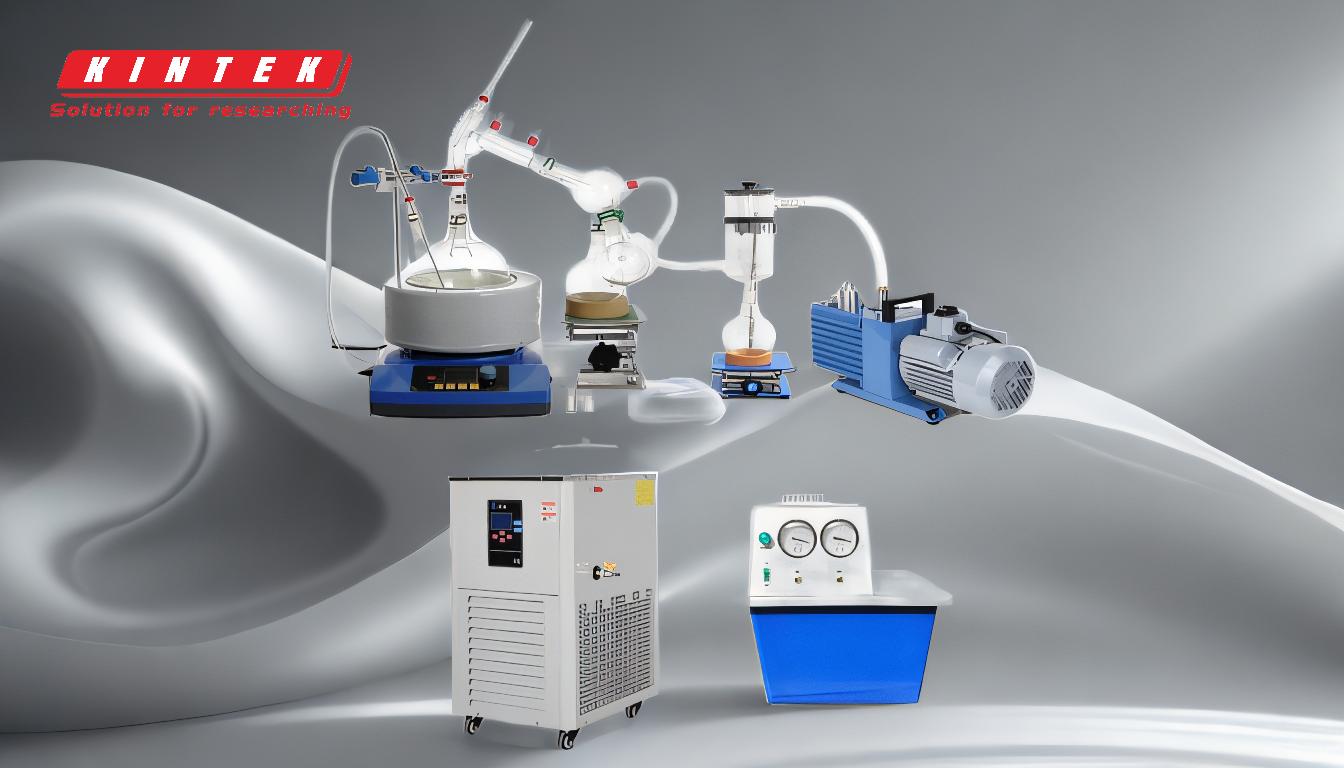Simple distillation is a fundamental separation technique used to purify liquids or separate mixtures of liquids with significantly different boiling points. It involves heating a liquid mixture to its boiling point, allowing the component with the lower boiling point to vaporize, and then condensing the vapor back into a liquid for collection. This method is effective for achieving moderate purity improvements and is commonly used in applications such as purifying water or separating volatile solvents. The process is most effective when the boiling points of the components differ by at least 70 degrees Celsius.
Key Points Explained:

-
Definition and Purpose:
- Simple distillation is a single-stage process designed to separate liquids based on their boiling points.
- It is particularly useful for mixtures where the components have significantly different boiling points (e.g., water and salt or volatile solvents).
-
Process Overview:
- The liquid mixture is heated in a distillation flask until it reaches the boiling point of the component with the lower boiling point.
- The vapor produced is then directed into a condenser, where it is cooled and converted back into a liquid (distillate).
- The distillate is collected in a separate container, leaving behind the higher-boiling-point components in the original flask.
-
Key Requirements:
- Boiling Point Difference: For simple distillation to be effective, the boiling points of the components must differ by at least 70 degrees Celsius. This ensures that the vapor produced is predominantly the lower-boiling-point component.
- Apparatus: The setup typically includes a distillation flask, a condenser, and a collection vessel. A heat source and temperature control are also essential.
-
Advantages:
- Simplicity: The process is straightforward and requires minimal equipment.
- Moderate Purity: It provides a moderate improvement in the purity of the separated components, as the vapor is generally purer than the original mixture.
- Scalability: Simple distillation can be easily scaled up or down depending on the volume of the mixture.
-
Limitations:
- Ineffective for Close Boiling Points: If the boiling points of the components are too close (less than 70 degrees Celsius apart), simple distillation will not effectively separate them.
- Single-Stage Process: Unlike fractional distillation, simple distillation does not allow for multiple stages of separation, limiting its ability to achieve high purity.
-
Applications:
- Water Purification: Simple distillation is commonly used to remove impurities such as salt from water.
- Solvent Separation: It is used in laboratories to purify solvents or separate volatile organic compounds.
- Essential Oils: The technique is employed in the extraction of essential oils from plant materials.
-
Comparison with Other Distillation Methods:
- Fractional Distillation: Unlike simple distillation, fractional distillation uses a fractionating column to achieve multiple vaporization-condensation cycles, making it suitable for separating components with closer boiling points.
- Steam Distillation: This method is used for heat-sensitive materials, where steam is introduced to lower the boiling points of the components.
-
Practical Considerations:
- Temperature Control: Precise control of the heating rate is crucial to avoid overheating and ensure efficient separation.
- Condenser Efficiency: The condenser must effectively cool the vapor to ensure complete condensation and prevent loss of the distillate.
By understanding these key points, one can effectively utilize simple distillation for separating and purifying liquids in various applications, ensuring optimal results based on the specific requirements of the mixture.
Summary Table:
| Aspect | Details |
|---|---|
| Purpose | Separates liquids based on boiling points; ideal for significant differences. |
| Key Requirements | Boiling points must differ by at least 70°C; requires a distillation setup. |
| Advantages | Simple, scalable, and provides moderate purity improvements. |
| Limitations | Ineffective for close boiling points; single-stage process. |
| Applications | Water purification, solvent separation, essential oil extraction. |
| Comparison | Less complex than fractional distillation; not suitable for close boiling points. |
Need help with liquid separation? Contact our experts today for tailored solutions!










